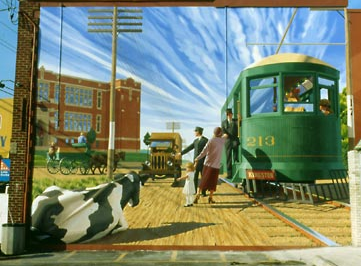Conservation guidelines for outdoor murals
The new millennium has seen a tremendous revival in outdoor mural programs. Murals have been commissioned to revitalize cities and towns, reduce graffiti, provide positive programs for youth and troubled neighborhoods, and attract new business and tourism.
A well-executed and well-located mural can be awesome and can bring about a vibrant sense of community. However, a mural that becomes an eyesore will have a negative impact on the attitude of the general public and community leaders towards other mural projects, towards public art and towards the conservation of cultural property in general. Therefore, it is important to ensure that murals remain in good condition for their expected lifetime.
There is a growing network of mural municipalities, technical experts, programs and artists that can be approached to provide advice and information to communities or groups that want to install a mural. In Canada, Mural Routes, Inc. promotes and facilitates the creation of public art murals across the country. In the United States, Rescue Public Murals is securing the expertise and support to document and save their significant community murals.
With continued collaboration and networking, it will be possible to build an inventory of best practices and to gain the information necessary to make decisions regarding specific proposals.

Note: References to commercial products are solely for the purpose of providing examples and information to readers in their search for appropriate and useful products for their projects. Mention of specific products does not imply endorsement by the Canadian Conservation Institute, nor does it preclude the usefulness of other products.
Contact information for this web page
These resources were published by the Canadian Conservation Institute (CCI). For comments or questions, including reproduction requests, contact the CCI.